I am just throwing together a quick and dirty GUI to display some data when I ran into an odd issue. The last label I add to the JFrame doesn't want to be positioned or display the border I put on it, so it looks like this:

Here is my code:
public DisplayData (Connection tConn)
{
ID = tID;
conn = tConn;
setupObjects();
setupFrame();
}
private void setupObjects()
{
JLabel caseLabel = new JLabel ("Case #:");
JLabel dateLabel = new JLabel ("Date:");
JLabel reportLabel = new JLabel ("Report:");
JLabel offenceLabel = new JLabel ("Offence:");
JLabel descriptionLabel = new JLabel ("Description:");
this.add(caseLabel);
this.add(dateLabel);
this.add(reportLabel);
this.add(offenceLabel);
this.add(descriptionLabel);
caseLabel.setBounds(50, 50, 130, 25); //x, y, width, height
dateLabel.setBounds(50, 100, 130, 25);
reportLabel.setBounds(50, 150, 130, 25);
offenceLabel.setBounds(50, 200, 130, 25);
descriptionLabel.setBounds(100, 50, 130, 25);
caseLabel.setBorder(BorderFactory.createLineBorder(Color.BLACK));
dateLabel.setBorder(BorderFactory.createLineBorder(Color.BLACK));
reportLabel.setBorder(BorderFactory.createLineBorder(Color.BLACK));
offenceLabel.setBorder(BorderFactory.createLineBorder(Color.BLACK));
descriptionLabel.setBorder(BorderFactory.createLineBorder(Color.BLACK));
}
private void setupFrame()
{
this.setTitle("Data Display");
this.setSize (650, 700); //Width, Height
this.setLocation(300, 10);
this.setResizable(false);
this.setVisible(true);
this.setDefaultCloseOperation(EXIT_ON_CLOSE);
this.setLayout(null);
}
Yes, I know I should be using a proper layout manager, but like I said i just wanted something quick and dirty. Plus, I will not be beaten by something that should be this simple. Any ideas would be appreciated.
EDIT: As Compass and Neophyte pointed out, my order of operations was off. Flipped my method calls and all is good again in the world. Thanks for the 2nd pair of eyes.
